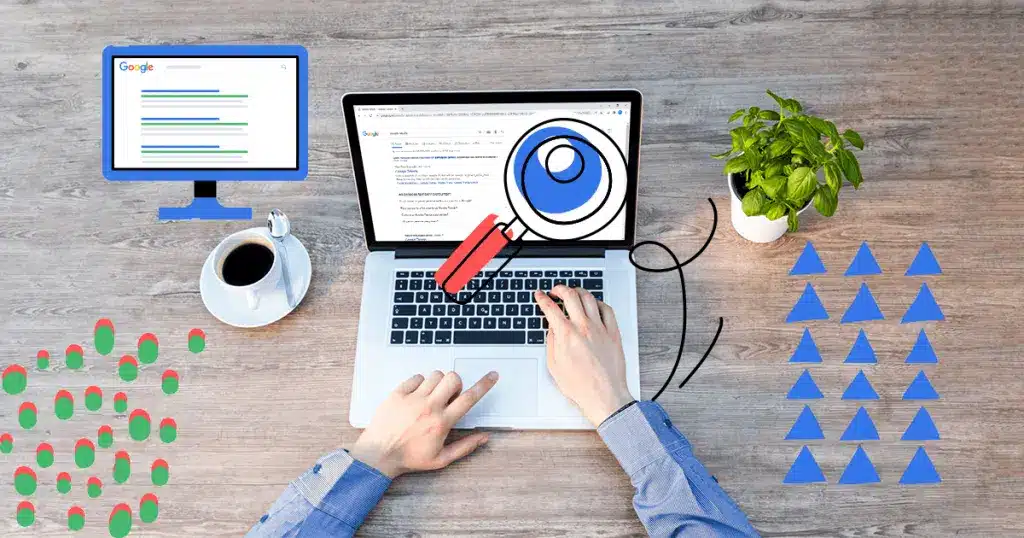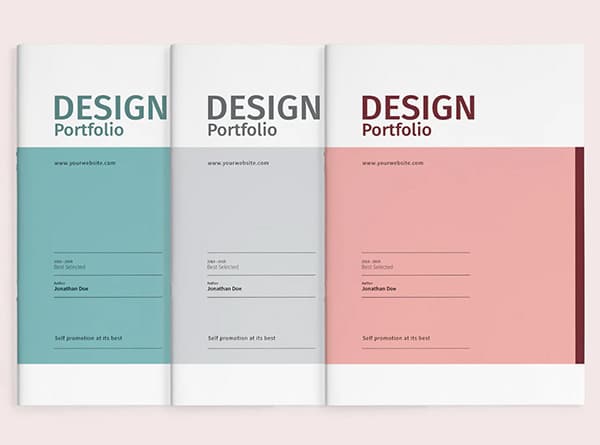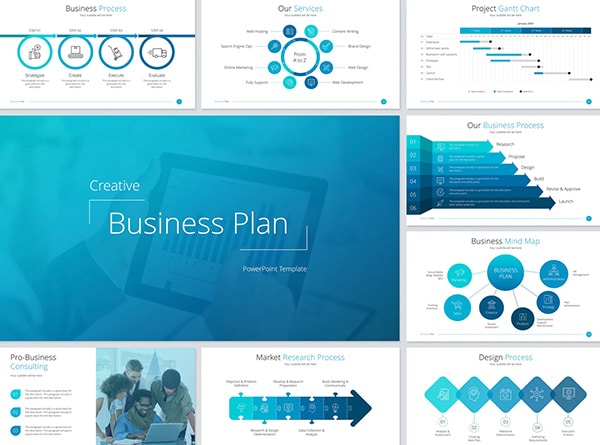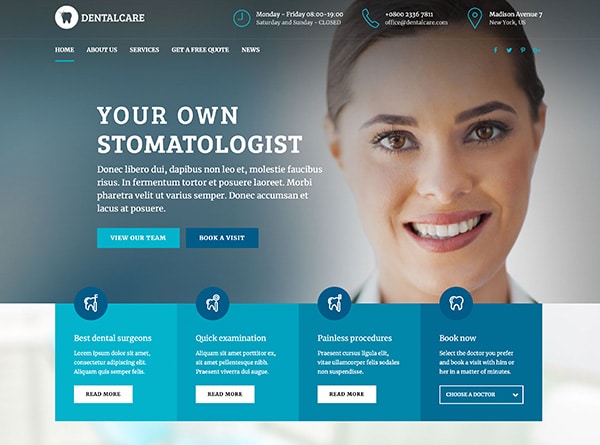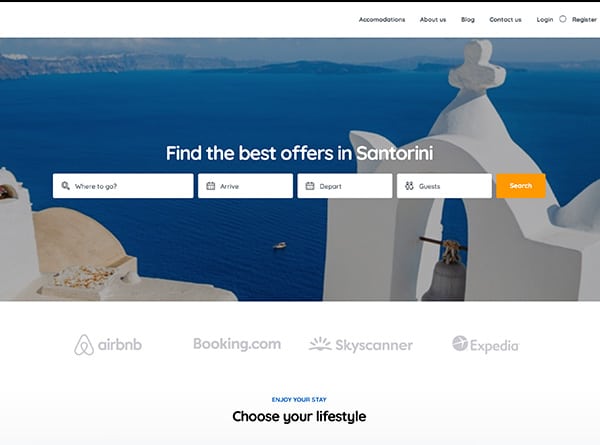
The internet has completely transformed the way companies operate and conduct their business. Today having a robust online presence is not just beneficial but essential for achieving success. Whether your business is based in Orange County or anywhere else in the world, having a website with a user-friendly design, easy navigation, and compelling content is crucial for thriving online. However, creating a successful website involves more than just putting together a few pages and calling it a day. It requires careful planning and a thoughtful process to ensure your website is optimized for conversion and provides real value to visitors.
In this blog post, we will discuss seven essential elements of website design that will help you create an engaging site for your Orange County business.
1. Quality Web Design for Maximum Visibility
Several factors contribute to a successful website design, but some are more critical than others. In Orange County, visibility is key to attracting potential customers and clients. A well-designed website will be easy to find and navigate, helping you stand out from the competition. Here are some essential elements of quality web design for maximum visibility:
- A Clear and Concise Website Title: Your website title should accurately reflect your business or brand. This helps visitors immediately understand what your site is about and improves your search engine ranking.
- A Powerful and Keyword-Rich Meta Description: Craft a meta description that attracts visitors from search engines. This brief summary should include relevant keywords and provide a compelling reason for users to click on your site.
- Strategic Use of Keywords: Incorporate keywords throughout your website content to improve your search engine ranking. This includes using keywords in your headings, subheadings, and body text.
- Well-Crafted and Informative Page Titles and Headings: Use clear and descriptive titles and headings to help visitors quickly understand what your website is about. This also helps search engines index your content more effectively.
- Compelling and Visually Appealing Product or Service Images and Videos: Use high-quality images and videos to showcase your products or services. Visual content can help explain what you offer in an engaging and memorable way.
- An Easily Navigable Website Structure: Ensure your website has a logical structure with clear menus and links to important pages. This makes it easy for visitors to find the information they need.
- Call-to-Action Buttons or Links: Encourage visitors to take the next step, whether it’s contacting you, signing up for a newsletter, or making a purchase. Use clear and compelling call-to-action buttons or links to guide users through your site.
2. Optimize Your Web Design for Mobile Devices
As more and more people use their mobile devices to access the internet, it is crucial to ensure that your website is optimized for these devices. Here are a few things you can do to make sure your website design is mobile-friendly:
- Use a Responsive Design: A responsive design adjusts itself to fit the screen of the device it is being viewed on. This ensures that your website looks great no matter what device it is being viewed on, whether it’s a smartphone, tablet, or desktop computer.
- Use Large Font Sizes: Make sure that your font sizes are large enough to be easily readable on a mobile device. Small text can be difficult to read on smaller screens, so use larger fonts to improve readability.
- Use Small Images: Mobile devices have smaller screens, so using smaller images will help ensure that your website loads quickly on these devices. Large images can slow down your site and frustrate users.
- Simplify Your Design: Keep your design simple and easy to navigate. Avoid complicated designs or features that may be difficult to use on a mobile device. A clean and straightforward design will provide a better user experience for mobile visitors.
By following these tips, you can ensure that your website design is optimized for mobile devices and provides a great experience for users no matter what device they are using.
3. Enhance User Experience with Intuitive Navigation
User experience is a critical aspect of web design. An intuitive navigation system helps visitors find the information they need quickly and easily. Here are some tips to enhance user experience with intuitive navigation:
- Use Clear and Descriptive Labels: Label your menu items clearly and descriptively. Avoid using jargon or technical terms that may confuse visitors.
- Organize Your Menu Logically: Group related items together and organize your menu in a logical order. This helps visitors find what they are looking for without having to search through unrelated items.
- Include a Search Function: A search function allows visitors to quickly find specific information on your site. Make sure your search bar is easy to find and use.
- Use Breadcrumbs: Breadcrumbs show visitors their current location within your site and provide links to previous pages. This helps users navigate your site more easily and understand its structure.
- Highlight Important Pages: Use visual cues, such as bold text or different colors, to highlight important pages or sections of your site. This draws attention to key areas and helps visitors find important information quickly.
By enhancing user experience with intuitive navigation, you can make your website more user-friendly and keep visitors engaged.
4. Create Engaging and Relevant Content
Content is king when it comes to web design. Engaging and relevant content keeps visitors on your site and encourages them to take action. Here are some tips for creating engaging and relevant content:
- Know Your Audience: Understand who your audience is and what they are looking for. Tailor your content to meet their needs and interests.
Use a Conversational Tone: Write in a conversational tone that is easy to read and understand. Avoid using overly technical language or jargon. - Include Visual Content: Use images, videos, and infographics to make your content more engaging. Visual content can help explain complex ideas and keep visitors interested.
- Update Your Content Regularly: Keep your content fresh and up-to-date. Regularly updating your content shows visitors that your site is active and provides them with the latest information.
- Use Keywords Strategically: Incorporate relevant keywords into your content to improve your search engine ranking. However, avoid keyword stuffing, as this can make your content difficult to read and may be penalized by search engines.
By creating engaging and relevant content, you can keep visitors on your site longer and encourage them to take action.
5. Incorporating Video and Animation
When it comes to website design, incorporating video and animation can make a significant difference. Not only do they add an extra layer of interest and engagement, but they also help convey your message in a more powerful way. When used correctly, video and animation can be strong tools for driving conversions and achieving other marketing goals.
However, it’s important to keep a few things in mind when incorporating them into your website design. Here are some tips for using video and animation in your Orange County website design:
- Keep it relevant: Ensure the videos and animations you include on your website are relevant to your business and target audience. Otherwise, you risk turning people off or causing them to click away from your site altogether. For instance, if you run a web design company, showcase your design process or client testimonials through engaging videos.
- Don’t go overboard: Less is often more when it comes to video and animation on websites. Too much can be overwhelming and distracting, so use them sparingly throughout your site. A few well-placed videos or animations will do the trick. For example, a short animation explaining your web design services can be more effective than multiple lengthy videos.
- Make sure they load quickly: No one wants to wait around for a video or animation to load, so make sure they’re optimized for fast loading times. This includes compressing files and using the right file format (such as HTML5). Fast-loading videos and animations ensure a smooth user experience, keeping visitors engaged.
- Use captions or transcripts: Not everyone will want to watch or listen to a video or animation on your site. Providing captions or transcripts ensures that all visitors can access the information, regardless of their preferences or needs. This also improves accessibility, making your web design more inclusive.
- Test for compatibility: Ensure that your videos and animations work seamlessly across different devices and browsers. This guarantees that all users, whether on a smartphone, tablet, or desktop, have a consistent and enjoyable experience. A web design agency should prioritize compatibility to maintain a professional image.
By following these tips, you can effectively incorporate video and animation into your Orange County website design, enhancing user engagement and driving conversions.
6. Ensure Fast Loading Times
Fast loading times are essential for a successful website. Slow-loading sites can frustrate visitors and cause them to leave before they even see your content. Here are some tips to ensure fast loading times:
- Optimize Images: Use compressed images to reduce file size without sacrificing quality. Large images can slow down your site, so make sure to optimize them for the web.
- Use a Content Delivery Network (CDN): A CDN can help speed up your site by distributing your content across multiple servers. This reduces the distance between your site and your visitors, resulting in faster loading times.
- Minimize HTTP Requests: Reduce the number of HTTP requests by combining files and using CSS sprites. Each request adds to your loading time, so minimizing them can help speed up your site.
- Enable Browser Caching: Browser caching stores static files on a visitor’s device, so they don’t have to be downloaded again on subsequent visits. This can significantly reduce loading times for returning visitors.
- Use a Fast Web Host: Choose a web host that offers fast and reliable service. A slow web host can negatively impact your site’s loading times, so make sure to choose one that meets your needs.
By ensuring fast loading times, you can provide a better user experience and keep visitors on your site longer.
7. Implement Strong Security Measures
Security is a critical aspect of web design. A secure website protects your business and your visitors from potential threats. Here are some tips for implementing strong security measures:
- Use HTTPS: HTTPS encrypts the data transmitted between your site and your visitors, protecting it from potential threats. Make sure your site uses HTTPS to ensure a secure connection.
- Keep Software Up-to-Date: Regularly update your website’s software, including your content management system (CMS), plugins, and themes. Outdated software can have security vulnerabilities that can be exploited by hackers.
- Use Strong Passwords: Use strong, unique passwords for your website’s admin accounts. Avoid using common passwords or easily guessable information.
- Implement Two-Factor Authentication (2FA): 2FA adds an extra layer of security by requiring a second form of authentication in addition to a password. This can help protect your site from unauthorized access.
- Regularly Back Up Your Site: Regularly back up your website to ensure that you can quickly restore it in case of a security breach or other issue. Store backups in a secure location and test them regularly to ensure they work.
By implementing strong security measures, you can protect your website and your visitors from potential threats.
8. Monitor and Analyze Your Website’s Performance
Monitoring and analyzing your website’s performance is essential for ongoing success. By regularly reviewing your site’s performance, you can identify areas for improvement and make data-driven decisions. Here are some tips for monitoring and analyzing your website’s performance:
- Use Analytics Tools: Use tools like Google Analytics to track your website’s performance. These tools can provide valuable insights into your site’s traffic, user behavior, and more.
- Set Performance Goals: Set specific, measurable goals for your website’s performance. This can help you stay focused and track your progress over time.
- Regularly Review Your Data: Regularly review your website’s performance data to identify trends and areas for improvement. Use this information to make informed decisions about your site’s design and content.
- Conduct A/B Testing: A/B testing involves comparing two versions of a web page to see which one performs better. This can help you identify the most effective design and content elements for your site.
- Gather User Feedback: Collect feedback from your site’s visitors to understand their needs and preferences. Use this feedback to make improvements to your site and provide a better user experience.
By monitoring and analyzing your website’s performance, you can make data-driven decisions and continuously improve your site’s effectiveness.
9. Integrating Social Media into Your Online Presence
As a business owner, you know that social media is a powerful tool to reach new customers and grow your brand. But what you may not know is how to integrate social media into your website design in a way that is both effective and stylish. Here are some tips for integrating social media into your website design:
- Include social media icons on your homepage: Make it easy for visitors to find your social media profiles by including icons for each platform on your homepage. You can use a plugin or widget to automatically display links to your profiles, or you can add them manually using HTML code. This ensures that visitors can quickly connect with you on social media, enhancing your online presence.
- Use social media feeds on your website: Adding a feed from your social media accounts is a great way to show visitors what you’re up to and what kind of content they can expect from you. Twitter and Instagram both offer plugins that make it easy to display your feed on your website. This keeps your site dynamic and engaging, showcasing your latest updates and interactions.
- Create share buttons for your content: If you want people to share your content with their followers, make it easy for them by adding share buttons to each piece of content on your site. There are many WordPress plugins that will automatically add share buttons to your posts and pages. Choose one that offers the platforms you want and that fits the look and feel of your site. This encourages visitors to share your content, increasing your reach and visibility.
- Highlight user-generated content: Showcase content created by your customers or followers on your website. This can include testimonials, reviews, or social media posts that mention your brand. Highlighting user-generated content builds trust and credibility, showing potential customers that others value your web design services.
- Run social media campaigns: Integrate your social media campaigns with your website by creating dedicated landing pages or banners that promote your campaigns. This drives traffic from your website to your social media profiles and vice versa, creating a cohesive online presence.
By integrating social media into your website design, you can create a more connected and engaging online presence, helping you reach new customers and grow your brand.
10. Leveraging SEO to Increase Your Online Visibility
Search engine optimization (SEO) is crucial for increasing your online visibility and attracting more visitors to your website. Here are some tips for leveraging SEO in your web design:
- Conduct keyword research: Identify the keywords and phrases that your target audience is searching for. Use these keywords strategically throughout your website content, including in your headings, subheadings, and body text. This helps search engines understand what your site is about and improves your ranking.
- Optimize your meta tags: Ensure that your meta titles and descriptions are clear, concise, and include relevant keywords. Meta tags play a significant role in how search engines index your site and how users perceive your content in search results.
- Create high-quality content: Focus on creating informative, engaging, and relevant content that provides value to your visitors. High-quality content not only attracts more visitors but also encourages them to stay on your site longer, reducing bounce rates and improving your SEO.
- Use internal and external links: Incorporate internal links to other pages on your site and external links to reputable sources. This helps search engines understand the structure of your site and improves your credibility.
- Optimize images and videos: Use descriptive file names and alt text for your images and videos. This helps search engines index your visual content and improves your overall SEO.
- Ensure fast loading times: As mentioned earlier, fast loading times are essential for a successful website. Search engines prioritize sites that load quickly, so optimizing your site’s speed can improve your ranking.
- Monitor your SEO performance: Use tools like Google Analytics and Google Search Console to track your SEO performance. Regularly review your data to identify areas for improvement and make data-driven decisions to enhance your SEO strategy.
By leveraging SEO in your web design, you can increase your online visibility, attract more visitors, and ultimately grow your business.
Conclusion
Creating an impressive online presence is essential for any business or organization. Orange County web design firms can help you develop a website that is both visually appealing and technically sound. By focusing on quality content, user-friendly design, responsive design, high-quality images, SEO optimization, and social media integration, you can create an impressive online presence that attracts visitors and leads to increased engagement and conversions.
If you aim to create an impressive online presence, Orange County web design firms offer the perfect solution. By leveraging their expertise, cost-effective solutions, and custom services, you can develop a website that looks great, functions properly, and is optimized for search engine visibility. Orange County web design firms provide the expertise and cost-effective solutions needed to create a website that not only looks great but also functions properly and is optimized for search engine visibility.


